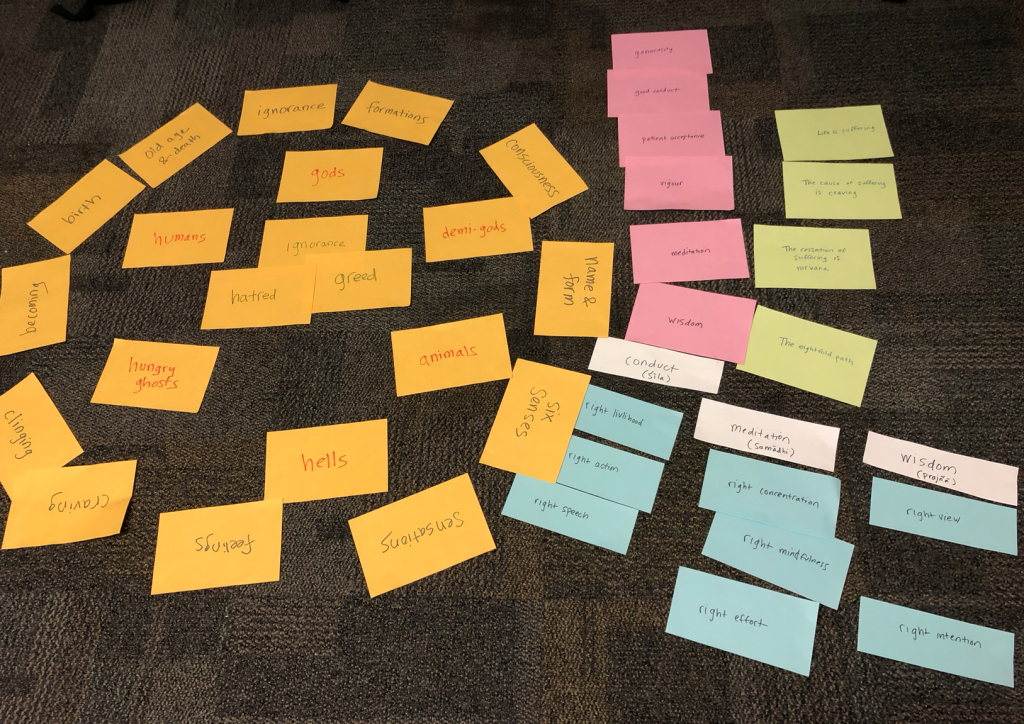In the initiative “Engaging Education in Buddhist Studies” (EEBS), established in 2019 with support from Khyentse Foundation and the Ho Centre, our instructors are creating modules for Buddhist studies courses that combine creative and/or contemplative practices that are grounded in research on the benefits of experiential education, including increased engagement, self-confidence, and compassion among student-participants. The goals of this initiative are to make student participation in classroom work more accessible, to amplify diverse voices in the classroom, and to support overall wellness and mental health among students. This project is part of our growing priority on programming that supports experiential learning, equity, and student well-being, following principles of place-responsive and trauma-informed pedagogy.
This initiative aims to bring the teaching of Buddhist Studies into the company of newly developing, dynamic educational movements that are student-centered, place-responsive, contemplative, trauma-informed, and attentive to student well-being. Well-tested approaches to embodied or engaged pedagogy emphasize the value of engaging students’ senses and their bodies in the process of studying religion, and much of our work is inspired by these approaches. This project also strives to help students feel connected to the lives of real Buddhists, historically or today, by interacting with stories, religious and aesthetic objects, movement, food, and ritual, and by taking interest in the concerns of householder Buddhists as well as monastics.
In 2019-20, EEBS work was incorporated into five U of T courses:
- RLG370 Interdependence
- RLG 201 Introduction to Religion in the Visual, Literary and Performing Arts
- RLG 373 Buddhist Institutions and Practices: Visuality and Materiality in Buddhism
- FAH 394 Sand, Stone, Gold and Crystal: Materials and Materiality in Asian Art
- RLG 370 Topics in Buddhism: Meditation and Mindfulness: From Buddhist Traditions to the Global Present
Experiential modules developed for those courses included activities where:
- Students maintained regular contemplative and wellness practices in class and at home, and class time was devoted to learning movement and breathing practices with local meditation practitioners.
- Students worked with traditional metal funnel tools (chakpur) to create sand mandalas in class and discussed how mandalas make meaning (impermanence and purposeful transience, difficulty of process and production).
- Students worked with a local Tibetan artist to sculpt torma (offering cakes) out of clay and coloured clay. They learned about the form, why they are made, and how they create substitutes for other kinds of imagined offerings
- Students worked with a local Tibetan artist to learn how to paint the Buddha’s head, studying the iconometric method used to measure a traditional Buddha head with its correct relative proportions according to the Tibetan art tradition


